- 07736 104738
- sam@medicalmassagelady.com
- Mon - Sat, 8:00 - 18:30
Pregnancy
Diastasis Recti is a partial or complete separation of the rectus abdominis (six pack) muscles at the abdominal midline, causing a gap in the abdominal muscles. This means that the stomach protrudes due to reduced strength of the abdominal wall which may cause or worsen lower back pain and pelvic instability. 66% of people with diastasis recti also have some level of pelvic floor dysfunction.
Between 50 and 60% of cases occur during the 2nd and 3rd trimesters of pregnancy, due to the growing uterus stretching the abdominal muscles, which then part at the linea alba. When this midline fascia, which is already softened due to pregnancy hormones, separates, not only does the reduced muscle support make a vaginal delivery problematic, but if the muscle doesn’t retract following delivery, it can lead to various other complications. 30 % of pregnancies result in the muscles not being able to maintain their shape due to the amount of pressure, and in severe cases a gap of around 2 cm in the muscle tissue can remain.
While predominantly seen in pregnancy, this can also affect newborn babies and men.
CAUSES:-
• more likely in subsequent pregnancies, especially if close together
• separation in a previous pregnancy
• petite women
• women with poor abdominal muscle tone
• pregnancy over the age of 35
• heavy baby or multiple pregnancy
• excessive inner-abdominal pressure due to expanding uterus
• pregnancy hormones relaxin and oestrogen soften the muscles to allows for stretching
• incorrect pushing during delivery can lead to diastasis recti
• genetics
• yo-yo dieting in men
• incorrect technique with abdominal exercises eg. sit ups and weightlifting
• premature newborn babies are sometimes born with diastasis recti due to partially developed abdominal muscles - usually corrects itself in time
Body mass index (BMI) and weight gain during pregnancy have not been proven to increase the risk
SELF CHECK FOR DIASTASIS RECTI :-
• Lie on your back, legs bent, feet flat on the floor
• raise shoulders up off the floor slightly, supporting your head with one hand, and look down at your belly
• move your other hand above and below your bellybutton, along your midline to see if you can fit any fingers in the gaps between your muscles
• if you feel a gap of one to two finger lengths, you likely have a moderate case of diastasis recti.
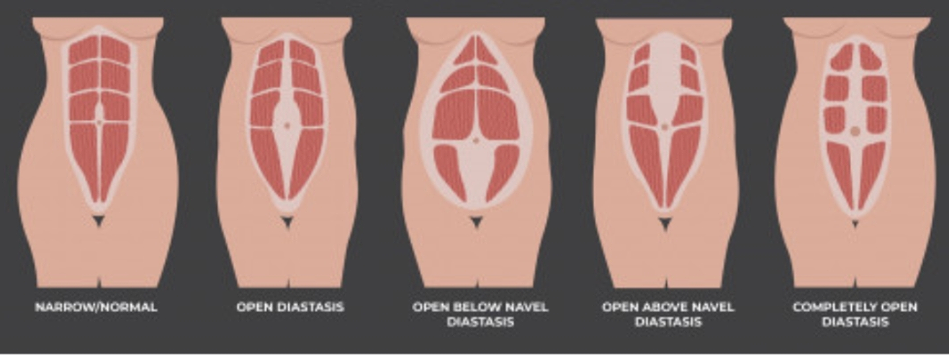
SYMPTOMS:-
• a bulge in your stomach, particularly when contracting your abdominal muscles
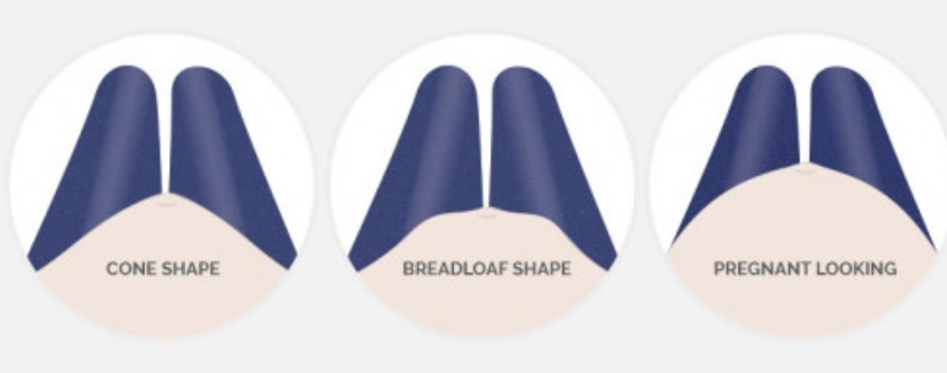
• lower back pain
• poor posture
• constipation
• bloating
• leaking of urine
• restricted breathing
• restricted movement
• hernia(in rare cases)
Symptoms in Pregnancy :-
• 2nd/3rd trimester - ridge developing on the abdomen above and below the bellybutton, most noticeable when using abdominal muscles to stand, sit up, or lie down
• severe abdominal, back, or pelvic pain- should see doctor immediately
• postpartum - a bulge in the abdomen or still looking pregnant
COMPLICATIONS:-
• compromised trunk stability and mobility
• back pain
• pelvic pain
• damage to your posture
• pelvic floor dysfunction
• hernia, in extreme cases
• a vaginal delivery could be more difficult due to reduced muscle support
Dos and Don'ts:-
• Don't strain as it can make the problem worse – constipation, heavy lifting including children will strain the connective tissue
• Don’t do abdominal crunches, sit-ups, pushups, press-ups, front planks,jack-knifes, straight leg lifts as they make abdominal separation worse
• Don’t hold your baby on one hip, if it’s painful
• Don’t cough without supporting your abdominal muscles
• Don’t do pilates/yoga type exercise as it can often make the problem worse. Without the correct support muscles, the sustained abdominal contraction of these exercises may pull outwards on the midline which can either increase the separation, or prevent it from knitting back together
• Do use correct pushing technique when subsequently giving birth, as incorrect technique can increase pressure on the weak abdominal tissue
• Do try the Tupler technique – performing specific exercises while wearing a belly splint to protect and hold the abdominal muscles together
• Do try pilates/yoga type exercises once the connective tissue has healed to strengthen the deep abdominal muscles, but make sure your trainer is experienced in "diastasis recti"
• Do begin core strengthening before you get pregnant or suffer with abdominal separation
• if abdominal separation is fairly small and you don’t seek treatment, do make sure that the muscles are brought back together before becoming pregnant again
TREATMENT:-
• if abdominal separation occurs during pregnancy, causing back or pelvic pain ,you can wear a binder or Tubigrip for support during the day
• avoid heavy lifting or straining of your abdominal muscles
• practice good posture
• support lower back when sitting with a cushion placed behind you
• bend knees, roll, and support yourself with your arm when getting in or out of bed, or standing up off the floor
• you can continue to strengthen your core during pregnancy, but follow modified, pregnancy-safe exercises for diastasis recti
• if still experiencing symptoms 8 weeks postpartum and the muscles haven’t corrected themselves, pelvic floor and deep diastasis recti specific abdominal exercises may help
• massage therapy
• physiotherapy
• kinesiology taping - helps support the abdominal muscles to activate correctly, improving posture and pain. Taping during pregnancy can prevent the diastasis from worsening.
• surgery is an option if pain restricts you in performing day-to-day activities, if there is a hernia, or for cosmetic reasons
• the Tupler Technique and the Mutu system focus on strengthening the core and strengthening the transverse abdominal muscles to ensure your abdominal organs are well-supported and there is less pressure on other connective tissue. These exercise plans will improve overall strength and stability more than closing the gap
Diastasis Recti will most likely involve a combination of treatment methods (massage, physiotherapy, exercise and kinesiology taping) over a period of 8-12 weeks with professionals experienced in the condition, and while treatment can be started many years after pregnancy, the chances of success are likely to be higher with earlier intervention. A suggested plan would be:-
• 4-7 sessions with a professional massage therapist
• 3-5 sessions with a physical therapist who specializes in working with Diastasis Recti
• 15 minutes a day of homework exercises
HOW MASSAGE CAN HELP:-
A combination of massage and physiotherapy will be more successful than just one of them, because they work in different ways. Massage works by:-
• opening up tissues that are tight due to over-firing
• retraining the nervous system to relax muscles that are over-firing
• to rebuild proper abdominal tone, alongside a physiotherapist who specializes in this issue
• to increase visceral circulation
• to release scar tissue which pulls the abdominal muscles outward, preventing physical therapy exercises from working
Physiotherapy strengthens and tightens muscles that are weak due to under-firing.
EXERCISES:-
• Identify your deep core muscles - without raising your chest or shoulders or tilting the pelvis, GENTLY draw your belly button back towards your spine as you slowly exhale
The following exercises will help to heal diastasis recti and manage the symptoms:-
• TUMMY TUCK
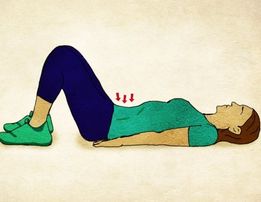
- this basic move stabilizes your core and strengthens and tones your transverse muscles the usual flexion which can stretch the midline further - Lie on your back and keep your knees bent. Breathe normally. Pull in your tummy below the belly button, drawing in the abdomen all the way toward your spine. This move should only involve the lower abdomen. Hold the move for 10–30 seconds. Aim for 10 reps 3 times a day.
• PELVIC SQUEEZE
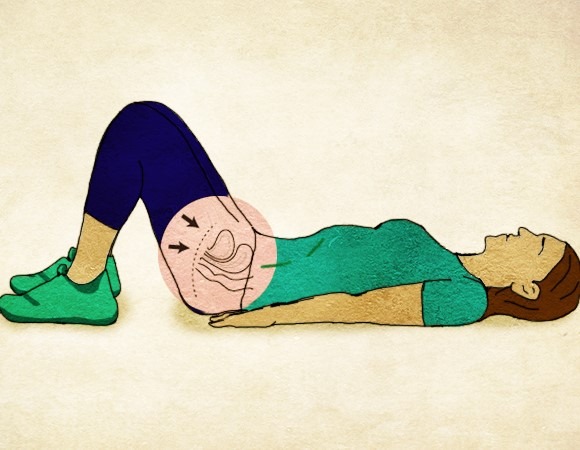
This simple Kegels exercise involves tightening your pelvic floor muscles and helps strengthen the core - Lie down in a comfortable position. While breathing normally, tighten the front and back pelvic floor muscles as if you were trying to stop yourself from urinating. Hold the contraction for 10 seconds. Do 20 reps three times a day. Once you have perfected this, you can do faster rounds, squeezing for one second and then letting go.
• PELVIC TILT
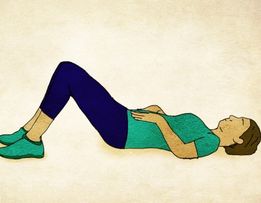
- this move tightens the transverse muscles. The trick is to work the pelvic muscles and not your glutes. Lie on your back with your knees bent. Place your hands, palms down, on your lower abdomen and contract your lower abdomen muscles. Breathe normally, while rolling the pelvis up till your lower back is flat against the floor. Keep the shoulders relaxed. Hold the position for 10 seconds and then relax the pelvis down. Do 5 reps of this move.
• UPRIGHT PLANK WITH SUPPORT

- the traditional plank pose is great for strengthening the core, but should be avoided if you have diastasis recti as it puts pressure on the abdominal separation. You can modify the plank pose and practice it in the standing position with a wall for support. Stand straight facing a wall and rest your palms flat on the wall, keeping your arms and shoulders straight. Draw your belly button close to your spine to engage your core, while breathing normally. Do ten reps. If you can hold this pose for 10 seconds and still feel strong in your core, you could give the move a boost by adding a few wall push-ups.
• UPWARD PLANK

- Lie in the supine position. Keep your legs hip-width apart, with your feet flat on the ground, toes pointing straight forward. Support your shoulders by placing your hands beneath them. Slowly move your heels toward your buttocks so that your fingers can touch the heels. While breathing in, lift the hips up off the floor. While breathing out, press your hands into your shoulders and spread out your collarbones. Now breathe out slowly.Hold the pose for at least 5 breaths – you can gradually bring it up to 20 breaths.
• DEEP BELLY BREATHING
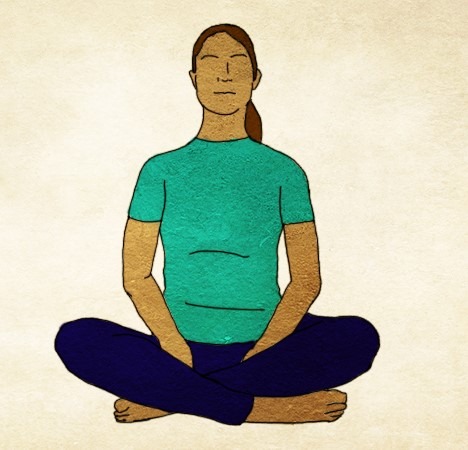
by practising deep belly breathing correctly you can tone your abdominal muscles as well as regulate the heart rate, reduce blood pressure, and lower stress levels. Sit down cross-legged on the floor or lie on your back on a mat. Inhale deeply, till you can feel the fullness in your belly and chest. Then exhale gradually, tightening your abdominal wall. Do 10 reps, 3 times a day.
Using a special diastasis recti splint to bind the belly while exercising is an integral part of some exercise systems. While there is little evidence to show that a splint can strengthen the core or close the gap, it can support your lower back and hold you in, making the bulge less obvious. If you choose to wear a splint, consult with a physiotherapist can show you how to splint and help you find the best fit.




